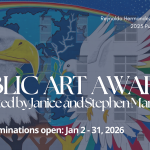Augustin Hadelich returns, alongside seductive Ravel and Stravinsky
The Milwaukee Symphony Orchestra will pair an entertaining Stravinsky violin concerto with Ravel's exotic score for "Daphnis et Chloe."
When Igor Stravinsky first heard Maurice Ravel’s score for the ballet, Daphnis et Chloé, in 1912, he proclaimed it to be “one of the most beautiful products of all French music.”
It is fitting, then, that on Friday, the Milwaukee Symphony Orchestra will pair a performance of Daphnis et Chloé with Stravinsky’s Violin Concerto in D Major. The orchestra will team up with guest conductor, Roberto Abbado, virtuoso violinist Augustin Hadelich, and the Milwaukee Symphony Chorus, led by Lee Erickson.
Hadelich, who last performed Mozart’s Violin Concerto No. 5 with the MSO in May, will return to the Marcus Center’s stage as violin soloist for Stravinsky’s concerto.
“[Stravinsky’s concerto] goes well with Daphnis et Chloé because Ravel’s music is often full of exoticism,” Hadelich said. “Both pieces will transport you to a different land.”
Ravel, perhaps best known for his orchestral work, Bólero, began composing the score for Daphnis et Chloé in 1909. The work – based on a Greek romance about the love between a Daphnis, a goatherd, and Chloe, a shepherdess – was commissioned by the great Sergei Diaghilev, who, with his company, the Ballets Russes, mounted a multitude of great performances such as Modest Mussorgsky’s Boris Godunov.
The ballet took a while to get off the ground, as Ravel had to overcome a language barrier with Diaghilev’s choreographer, Michel Fokine. Ravel wrote in a letter to a friend: “What complicates things is that [Michel] Fokine doesn’t know a word of French, and I only know how to swear in Russian. Even with the interpreters around, you can imagine how chaotic our meetings are.”
In time, the piece was completed and premiered as one of Ravel’s most ambitious works, combining brilliant orchestration with an evocative, wordless chorus.
This piece stands in stark contrast to the Stravinsky concerto, which Hadelich describes as “an entertaining, far less passionate work.”
“I think it is a funny piece,” said Hadelich, referring specifically to the concerto’s first two movements. “There are parts in the piece that make people laugh. Some things are a little goofy, like circus music.”
Stravinsky, better known for his ballets Firebird Suite and The Rite of Spring, conducted the concerto in 1931 after violinist Samuel Dushkin approached Stravinsky’s publisher to create the piece. Stravinsky was hesitant to write a concerto mainly for violin, as he said he was not familiar with the instrument.
Stravinsky ultimately agreed to write the work, and when he met with Dushkin, the two forged a friendship that lasted until Stravinsky’s death in 1971. Stravinsky used Dushkin’s violin expertise multiple times while composing the piece, although, as Hadelich explains, the piece relies heavily on background instruments.
“Even though it is a violin concerto, very frequently he has little duets and trios going on between the background instruments,” Hadelich said. “I think it will be fun for [the audience] to hear them. It sort of showcases the different players — especially the bassoon and the flute.”
“From a musical standpoint, though, the music flows quite naturally,” he added. “It’s pretty straightforward.”
Stravinsky presents his characteristic asymmetric rhythm and his playful dissonance in each of the four movements. Listeners should pay attention to the strange chord played by the violinist at the beginning of each movement. The chord, called the “passport” to the concerto by Stravinsky, stretches from D4 to E5 to A6.
When Stravinsky first sketched the “passport” for Dushkin, Dushkin immediately said it would be impossible to play. Dushkin returned home, tried it out on his violin and quickly phoned Stravinsky to tell him that it was possible after all.
“The chord is extremely, extremely difficult to stretch with your hand,” Hadelich said, laughing. “It’s kind of excruciating, and [Stravinsky] decided to start each movement with it, so that was a pretty mean thing to do.”
The juxtaposition of these two pieces will highlight the musical alliance between Russian and French artists in the early 20th century and promises to leave the audience, as Hadelich said, “very entertained.”
Concert Information
Concert time is 8 p.m. Friday and Saturday, Sept. 27 and 28 and 2:30 p.m. at the Marcus Center’s Uihlein Hall. Tickets are $25-$102 at the MSO website, the MSO ticket line, 414-291-7605, and at the Marcus box office, 414-273-7206.
Hear the MSO musicians and local music experts engage in a personal discussion about the symphony an hour before the performance at Meet the Music in the Anello Atrium at the Marcus Center for the Performing Arts.























